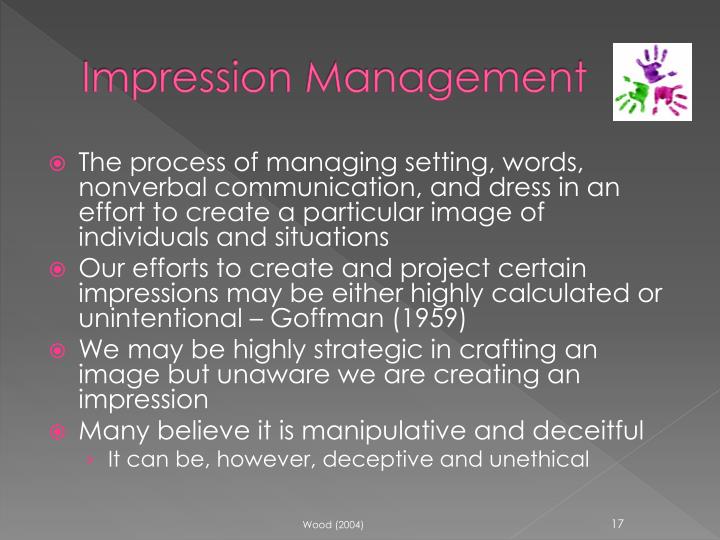
Impression management is a concept to be taken very seriously. It may seem increasingly ironic that the tactic that aided in the damaging and exiling of a person can be the very approach that puts that person back in the social standings. Damaged identities and suffering social interactions can take a toll on a person, which enviably forces that person to retreat to impression management once again. According to Newman (2009), “Impression management can lead to the creation of damaged identities, which must be repaired in order to sustain social interactions” (p.183). Some of the repercussions are negative and can even be damaging to the person responsible for the implementation of impression management tactics.

There are a variety of social implications within impression management, but not all of the social implications are positive. The previous example illustrates how impression management can also have a number of negative implications, such as, deception and falsification of self. This approach helps a person carefully craft relationships and by extension they have the ability to alter their position in the socialization process through impression management. This deceptively altered perception allows a person to construct a new, but not necessarily improved version of him or herself. The use of impression management provides people with the necessary skills to create a custom and often falsified perception. Impression management allows the production of manufactured personas, which aid in the socialization process. “Impression management plays a prominent role in the socialization process” (Newman, 2009, p.173). Newman compliments this concept by assessing additional socialization implications. People across the globe implement this concept in order to obtain a favorable social outcome.

Ferrante (2008) expands on this concept in her book, Sociology: a Global Perspective, “Even if people are aware that they are manipulating reality, impression management can be a constructive feature of social interaction” (p.131). It is not always clear whether or not people are aware of the allusions they create when they intentionally alter their values, norms, roles, and statuses to manufacture positive impressions. By molding values, norms, roles, and statuses, people can modify themselves and alter how others perceive them. We mold them to suit us as we interact with others” (Brym and Lie, 2006, p.144).

“Nobody hands values, norms, roles, and statuses to us fully formed, nor do we accept them mechanically. These factors are social, cultural and spiritual. Impression management is a fundamental and universal process that involves a number of influential factors. According to Newman (2009), impression management is an “act presenting a favorable public image of oneself so that others will form positive judgments” (p.184). A symbolic interaction theorist, Erving Goffman, coined the term impression management in 1959 and from then on, sociologists and theorists have been adding insight and importance to the concept.

According to Sinha (2009), "Impression management is an active self-presentation of a person aiming to enhance his image in the eyes of others" (p.104).


 0 kommentar(er)
0 kommentar(er)
